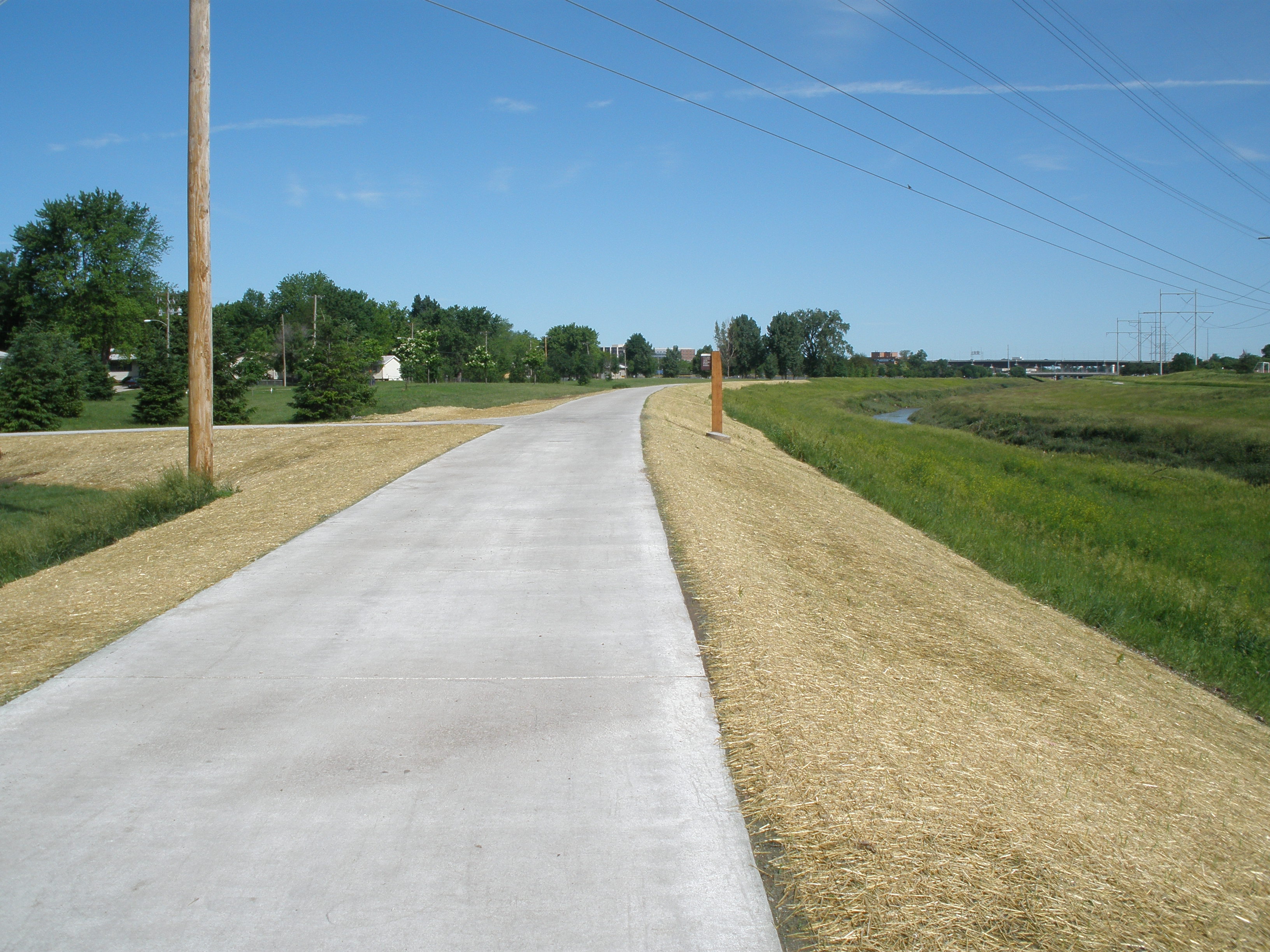Erosion and Sediment
Soil erosion is a naturally occurring phenomenon where soil particles are displaced and carried away by water, wind or other agents. The rate at which erosion occurs depends upon the properties of the soil, topography, vegetative cover, climate, rainfall intensity and duration, and the volume and characteristics of the water flow. Sedimentation is the deposition of the eroded soil which may eventually end up in our lakes, reservoirs, streams, or other drainage ways. Sedimentation may restrict drainage ways, plug culverts, damage property and adversely impact stream ecological systems.
Erosion and sediment control is accomplished by:
- Slowing water’s velocity by decreasing slope and decreasing the amount of impervious areas on a site.
- Infiltration by vegetation.
- Temporary or permanent structural control practices (fabric silt fence, hay bales, inlet sediment filters, stabilized construction entrances, grade stabilization or slope protection, terrace construction, etc.)
- Retention or temporary detention basins.
Construction activities typically involves disturbance of large land areas. Erosion and sediment control is a major concern in construction and is addressed during all phases of the project from planning and design through construction, and continues into maintenance. An erosion and sediment control program includes the plans of action and provision of documents to achieve an acceptable level of erosion and sediment control.
For more information on City of Omaha’s Stormwater Program see:
http://www.omahastormwater.org/
Don’t risk running afoul of government regulations; contact the professionals at RW Engineering to ensure that you have the right erosion control designs for your project.

